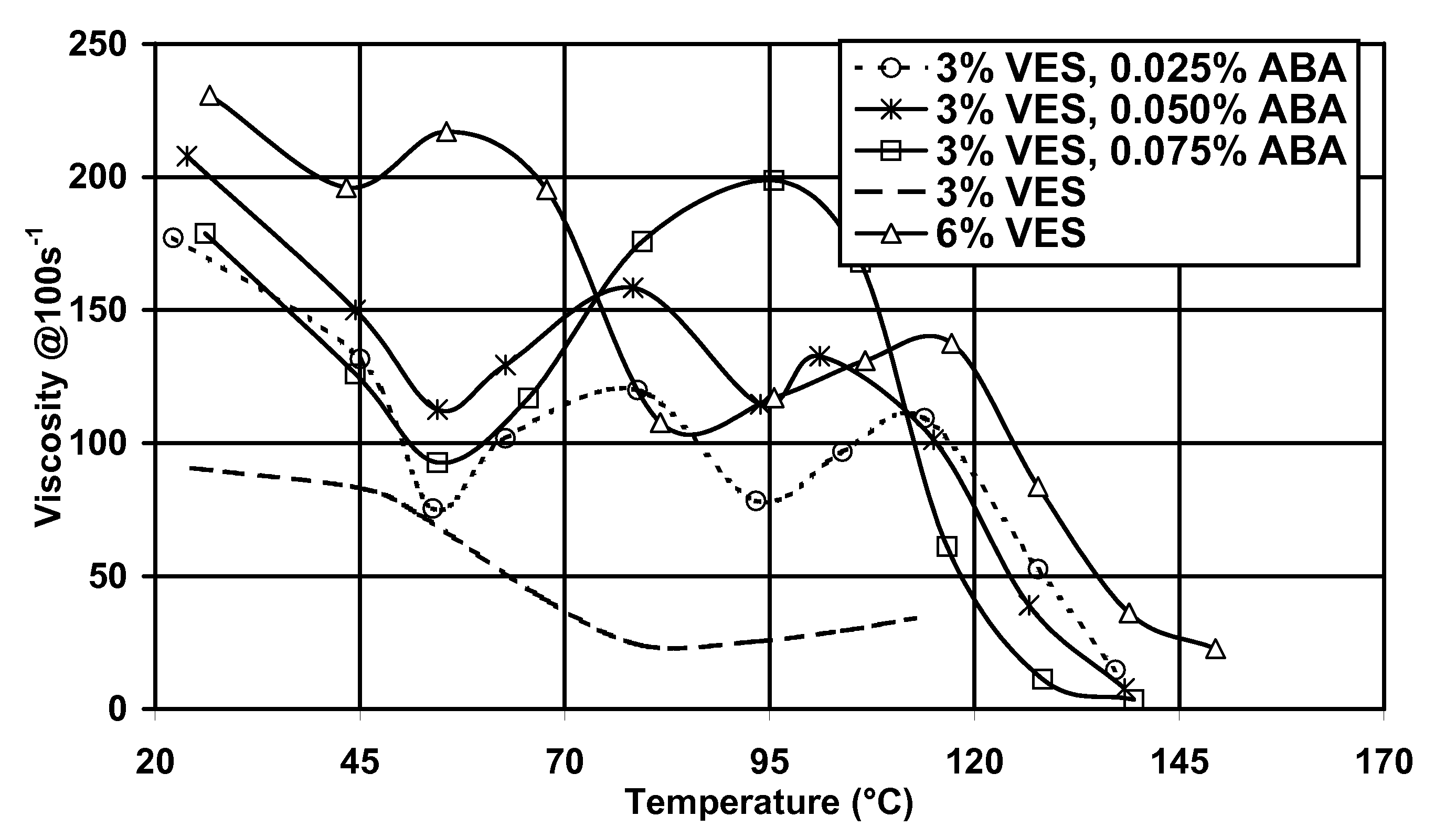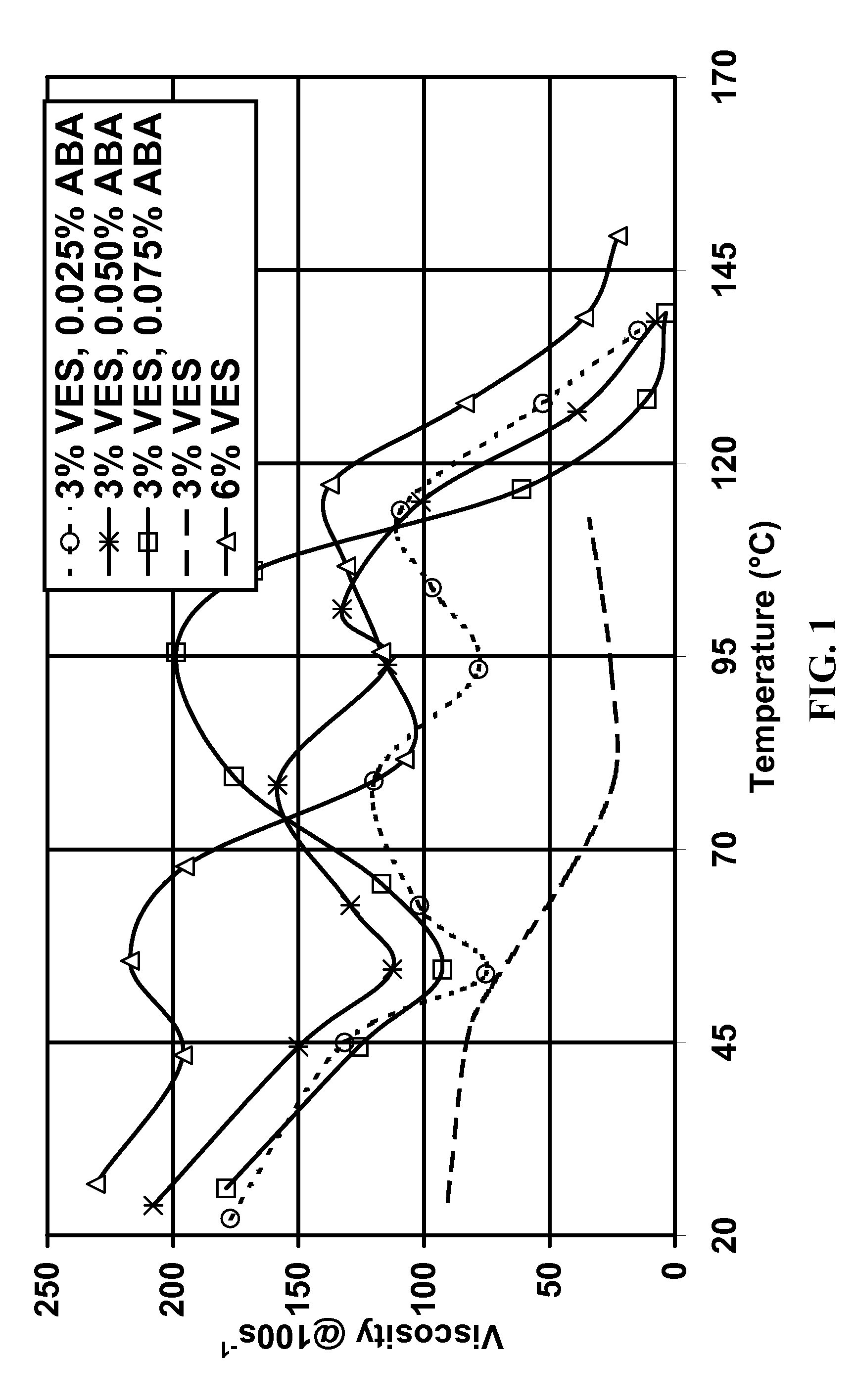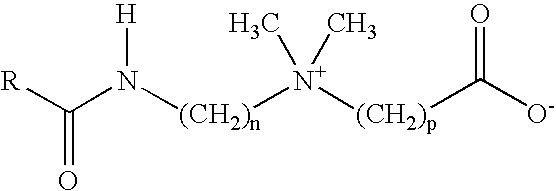Additive for viscoelastic fluid
a viscoelastic fluid and additive technology, applied in the field of additives for viscoelastic surfactant fluid systems, can solve the problems of reduced stability, reduced viscosity, and longer rehear time, and achieve the effect of shortening the shear recovery time and shortening the fluid's shear recovery tim
- Summary
- Abstract
- Description
- Claims
- Application Information
AI Technical Summary
Benefits of technology
Problems solved by technology
Method used
Image
Examples
example 1
[0037]Upon addition of a co-gelling agent to a BET-E-40 VES system, a new fluid system was made that demonstrated good viscosity profiles even at a concentration of 2-3% VES. (Results with 3% BET-E-40 VES are shown in FIG. 1; experiments have not been performed, but it is believed that lower concentrations can be used.) The as-received BET-E-40 used in the experiments contained about 1% of a sodium polynaphthalene sulfonate (see below). The co-gelling agent used was an ABA type material of formula 2 above with x=z=12, and y=32 as an example to demonstrate the effect. As shown in FIG. 1, this BET-E-40 system formed a good fluid at a concentration of 6%. Lowering the surfactant concentration to 3% without a co-gelling agent caused lowering of the fluid viscosity to too low a value at some temperatures. Not shown, is that lowering the surfactant concentration without a co-gelling agent also resulted in unacceptably long rehealing times after severe shear. When very small amounts of the...
example 2
[0039]Table 1 below shows the shear recovery times observed when various amounts of the ABA co-gelling agent of Example 1 was added to the VES surfactant system of Example 1. In these experiments, approximately 200 mL of already-mixed VES fluid was sheared at no less than 10,000 rpm for no less than 30 seconds and no more than 1 minute in a 1 L Waring blender. The shearing was stopped and timing was begun. The fluid was poured back and forth between a beaker and the blender cup and the fluid recovery was characterized by the recovery time estimated by visual observation. The fluid recovery time was the time at which fluid “lipping” occurred. The fluid “lips” when inclining the upper beaker or cup containing the fluid does not result in fluid flow into the container below, but rather the formation of a “lip”, and pulling the container back to a vertical position pulls back the “lip”. In fracturing fluid practice, “lipping” is used to estimate when the fluid reaches its near-equilibri...
PUM
| Property | Measurement | Unit |
|---|---|---|
| concentration | aaaaa | aaaaa |
| shear recovery time | aaaaa | aaaaa |
| time | aaaaa | aaaaa |
Abstract
Description
Claims
Application Information
 Login to View More
Login to View More - R&D
- Intellectual Property
- Life Sciences
- Materials
- Tech Scout
- Unparalleled Data Quality
- Higher Quality Content
- 60% Fewer Hallucinations
Browse by: Latest US Patents, China's latest patents, Technical Efficacy Thesaurus, Application Domain, Technology Topic, Popular Technical Reports.
© 2025 PatSnap. All rights reserved.Legal|Privacy policy|Modern Slavery Act Transparency Statement|Sitemap|About US| Contact US: help@patsnap.com



